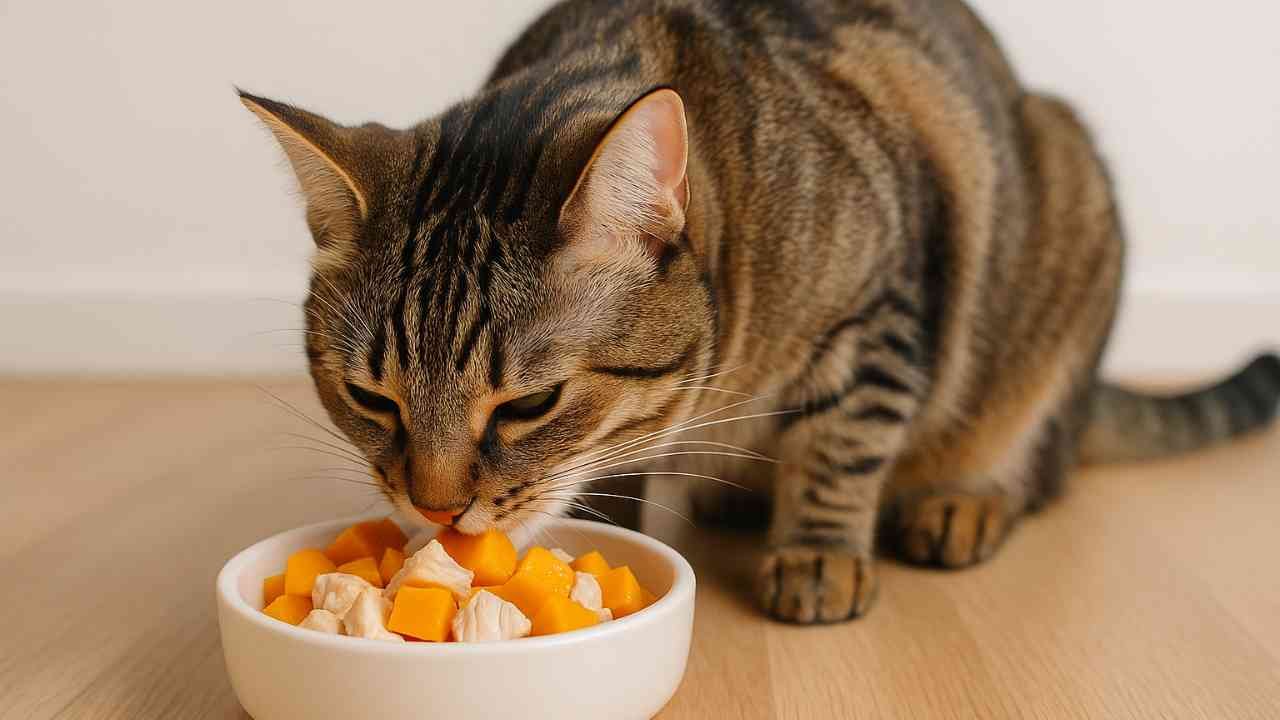Introduction
Homemade food is trending — not just for humans, but for our pets too. Many cat owners wonder:
“Is homemade food safe for my cat?”
The short answer is: Yes — but only if it’s done right.
In this article, we’ll break down:
- Pros and cons of homemade cat food
- Nutritional needs of cats
- Common mistakes to avoid
- What makes homemade food safe (and unsafe)
- Tips to create a balanced homemade diet
Whether you’re switching from commercial food or starting from scratch, this guide will give you clarity and confidence.
✅ Benefits of Homemade Cat Food
| Benefit | Explanation |
|---|---|
| Ingredient Control | You decide exactly what goes into your cat’s bowl |
| Allergy Management | Eliminate allergens causing skin or stomach issues |
| Freshness & Quality | No preservatives or low-grade fillers |
| Emotional Satisfaction | Feels good knowing you’re feeding your cat with love |
Homemade meals let you tailor the food to your cat’s needs — age, health, energy, and taste.
❗ Risks of Homemade Cat Food (If Not Done Properly)
Despite its benefits, homemade cat food can be dangerous if not nutritionally balanced.
| Risk | Impact |
|---|---|
| Taurine Deficiency | Can cause blindness or heart failure |
| Calcium Imbalance | Leads to weak bones or deformities |
| Too Much Phosphorus | Damages kidneys over time |
| Vitamin A Overload | Toxic in high doses |
| Undercooked/Raw Meat | Can carry bacteria or parasites |
⚠️ Important: Cats are obligate carnivores — they need specific nutrients that humans or dogs don’t.
🧠 What Makes Homemade Food “Safe” for Cats?
To safely feed your cat homemade meals, you need to ensure:
✅ Correct Protein Source: Animal protein like chicken, turkey, fish, or liver
✅ Adequate Taurine: Add supplements or organ meats
✅ Balanced Calcium to Phosphorus Ratio: Use eggshell powder or bone meal
✅ No Toxic Ingredients: Garlic, onions, chocolate, grapes = ❌
✅ Proper Cooking: Kill bacteria and parasites by cooking meat fully
✅ Portion Control: Avoid overfeeding or underfeeding
🧾 Basic Nutritional Requirements for Cats
| Nutrient | Function | Source |
|---|---|---|
| Protein | Muscle & energy | Chicken, turkey, fish, egg |
| Taurine | Heart & eye health | Supplement or organ meats |
| Fatty Acids | Skin & coat | Fish oil, egg yolk |
| Calcium | Bone strength | Eggshell powder, bone meal |
| Vitamin A | Vision & growth | Liver (in moderation) |
| Water | Hydration | Wet food or added broth |
🐱 Cats cannot survive long on carb-heavy diets — protein and fat must dominate.
🍽️ Safe Homemade Ingredients for Cats
| Category | Ingredients |
|---|---|
| Protein | Chicken, turkey, salmon, tuna (cooked) |
| Carbs (optional) | Pumpkin, sweet potato (small amount) |
| Fats | Fish oil, egg yolk |
| Supplements | Taurine, calcium, vitamin E |
Unsafe/Toxic Ingredients to Avoid:
- Onions, garlic, chocolate, caffeine
- Alcohol, bones (cooked), dairy
- Grapes, raisins, raw dough
🥣 Example of a Safe Basic Recipe
Chicken and Pumpkin Meal
Ingredients:
- 1 cup boiled shredded chicken
- 1 tbsp mashed pumpkin (plain)
- 1 tsp olive oil
- 1/2 tsp taurine powder
- Crushed eggshell (1/2 tsp)
Instructions:
- Cook and shred chicken
- Mix with pumpkin, oil, supplements
- Serve cooled in small portion
- Store leftovers in fridge for 2 days
✅ Balanced. ✅ Easy. ✅ Beginner-safe.
💬 What Vets Say About Homemade Cat Food
Most vets agree:
- Homemade food can be safe — but only if it’s nutritionally complete
- Supplements are usually required
- Don’t feed only chicken or fish long-term
- Best practice: Rotate ingredients, monitor your cat, and consult a vet or pet nutritionist
📞 If possible, have your recipe reviewed by a vet at least once.
🔁 Homemade vs Commercial Cat Food – Comparison Table
| Feature | Homemade | Commercial |
|---|---|---|
| Ingredient Control | ✅ Full | ❌ Limited |
| Nutrient Balance | ⚠️ Tricky | ✅ Usually balanced |
| Additives/Fillers | ❌ None | ✅ Often present |
| Cost | ✅ Lower in long term | ❌ Can be higher |
| Time Required | ❌ More effort | ✅ Very convenient |
🧠 Tips to Make Homemade Food Safer
- Measure ingredients — don’t guess!
- Use accurate kitchen scale and measuring spoons
- Avoid giving the same recipe daily — rotate protein and fiber sources
- Stay updated with vet-approved recipes and guidelines
- Monitor your cat’s weight, stool, and energy weekly
❓ FAQs – Is Homemade Cat Food Really Safe?
Q: Can I feed my cat only chicken?
A: No — plain chicken lacks taurine, calcium, and other essential nutrients.
Q: Is raw meat safe for cats?
A: Only under vet supervision. Beginners should stick to cooked recipes.
Q: Can I skip supplements?
A: Not recommended — taurine and calcium are critical for survival.
Q: How often should I feed homemade food?
A: Start with 1–2 meals per day and gradually adjust as per your cat’s health.
📝 Final Thoughts
So, is homemade food safe for cats?
✅ Yes — if it’s balanced, clean, and thoughtfully prepared.
Homemade meals can improve your cat’s energy, digestion, and overall health — but the key is knowledge + nutrition.
You’re not just feeding your pet — you’re caring for a family member.
